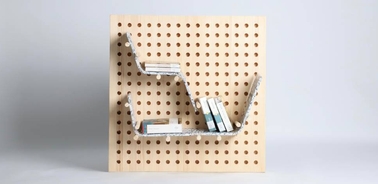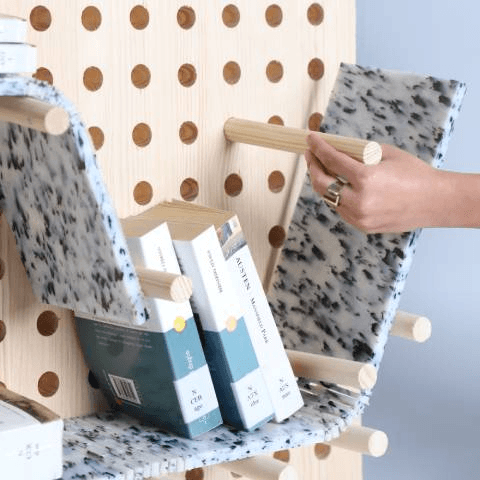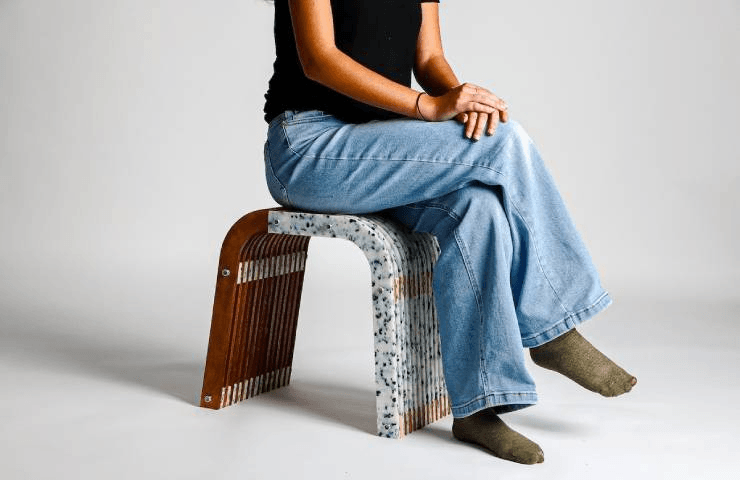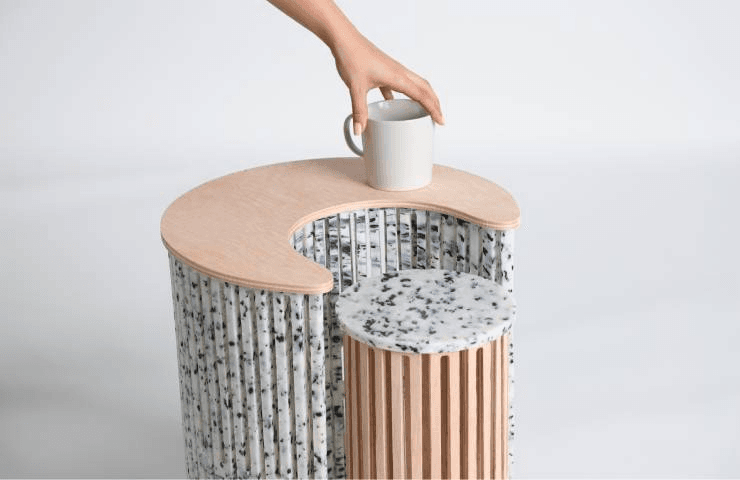IE School of Architecture and Design and CM PLASTIK Advance Sustainable Design Education

Through hands-on experimentation, students have had the opportunity to create functional products using recycled plastic and responsible design principles.
Students from IE School of Architecture and Design have been invited to reflect on material use, function, and sustainability through a practical design challenge. Guided by professors Héctor Serrano, Eli Gutierrez, Pablo Alabau, and Miguel Leiro, the students have worked on a sustainable design challenge jointly with CM PLASTIK, transforming recycled plastic into functional products. This hands-on experience allowed students to explore material use, functionality, and sustainability through responsible design.
"Collaborating with the next generation of designers has shown us just how powerful recycled materials can be in the right hands."
Carlos Martínez, founder of CM PLASTIK
 "PegShelf" by Lavinia Bernasconi, Laura Carrillo, Kiara Finckenstein “It’s not just about creating beautiful or functional objects, it’s about rethinking our relationship with waste and understanding that materials once considered useless can drive innovation", said Carlos Martínez, founder of CM Plastik. "Seeing students take our recycled panels and transform them into thoughtful, well-crafted pieces reinforces our belief that design has a critical role to play in the transition toward a circular economy. Projects like this give us hope, not only for the future of design, but for the future of the planet", added Martínez.
"PegShelf" by Lavinia Bernasconi, Laura Carrillo, Kiara Finckenstein “It’s not just about creating beautiful or functional objects, it’s about rethinking our relationship with waste and understanding that materials once considered useless can drive innovation", said Carlos Martínez, founder of CM Plastik. "Seeing students take our recycled panels and transform them into thoughtful, well-crafted pieces reinforces our belief that design has a critical role to play in the transition toward a circular economy. Projects like this give us hope, not only for the future of design, but for the future of the planet", added Martínez."With environmental urgency at its core, the CM PLASTIK project invited students to reimagine design through the lens of material responsibility. Sustainability here is not a theme—it’s a method," said professor Héctor Serrano. "Every cut, joint, and composition carried consequences; it was a framework for every decision," added professor Eli Gutierrez. "Each prototype had to consider material efficiency, environmental impact, and storytelling," said professor Pablo Alabau. "The plastic’s texture and origin stories informed aesthetics and narratives, while wood served to ground the pieces in contrast and structural logic," explained professor Miguel Leiro.
The resulting designs range from furniture and lighting to storage and modular systems. One such example is "PegShelf" by Lavinia Bernasconi, Laura Carrillo, and Kiara Finckenstein—an adjustable shelving system that encourages user interaction and customization, aiming to reduce unnecessary waste."Transformer", by Lucia Romero, Pia Finkemeier, and Leonie Mellac, is a multifunctional piece that shifts between chair, stool, and table. It emphasizes the contrast and compatibility between the recycled plastic and wood.

Santi Jarquin, Zoe Boyd, and Leo Tubman developed "Split U In Half", a chair constructed with alternating wood and plastic legs connected by stainless steel rods. The project explores structural rhythm and repetition. "Ori-Kotatsu", by Borys Świerczyński and Aron Erdos, is a low Japanese-style table that blends recycled plastic and warm wood. Inspired by traditional kotatsu tables, it invites users to gather at floor level, fostering connection through simple, tactile design.
Other student works incorporated movement and modularity. "Sliding Light" by Daniela Antimissaris, Carlota Castillo, and Manuela Rodríguez, allows users to adjust lighting intensity by sliding a grid over the lamp, demonstrating how interaction can enhance both function and atmosphere. "The Hug", created by Roxanna Dehghani, Angela Fakhry, and Fei Bushati, visually unites wood and plastic in a balanced form that communicates both structural and symbolic cohesion.

In "Hole-y Table", designed by Sara Baos, Justine Daubert, and Angela Martin-Retortillo, a single cut-out from the tabletop is reused as part of the structure—an efficient use of the material with minimal waste. Meanwhile, "The Infinity Winery", by Lucia Gonzalez, Lucia Dao, and Marta Cuesta, uses kerf bending techniques to give the recycled plastic flexibility, resulting in a modular, screw-free wine rack that can be expanded as needed.
This hands-on project offered students the opportunity to confront the real-world implications of sustainable design within a defined set of constraints. It also reflects the IE School of Architecture and Design's broader commitment to integrating responsible practices into design education.
